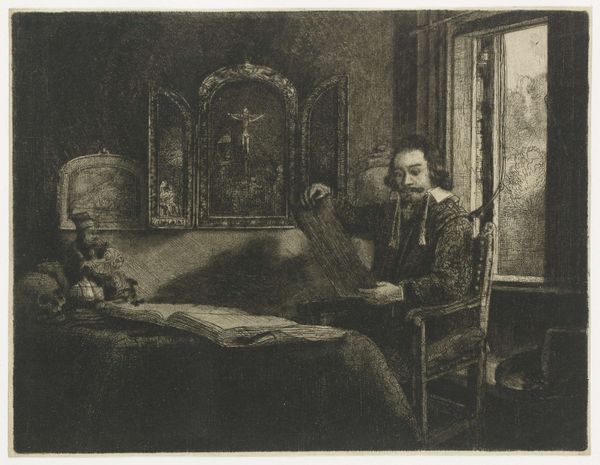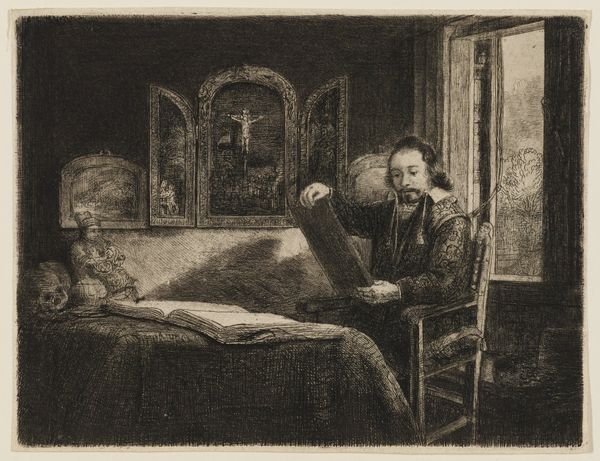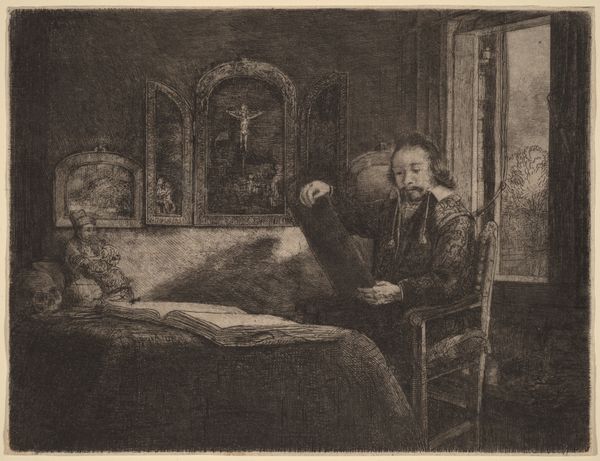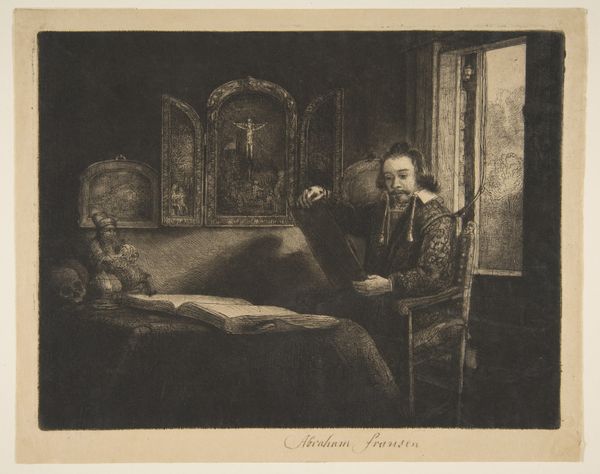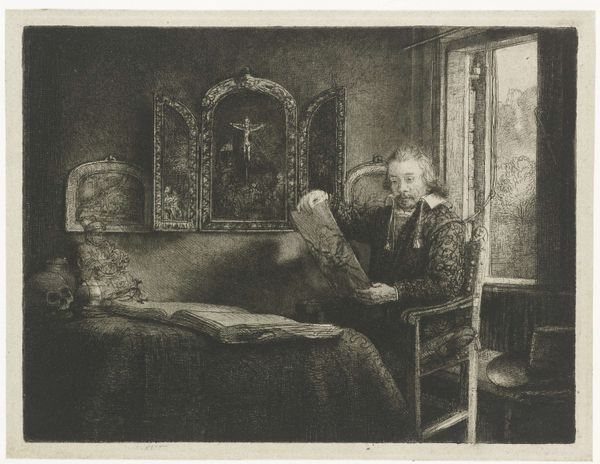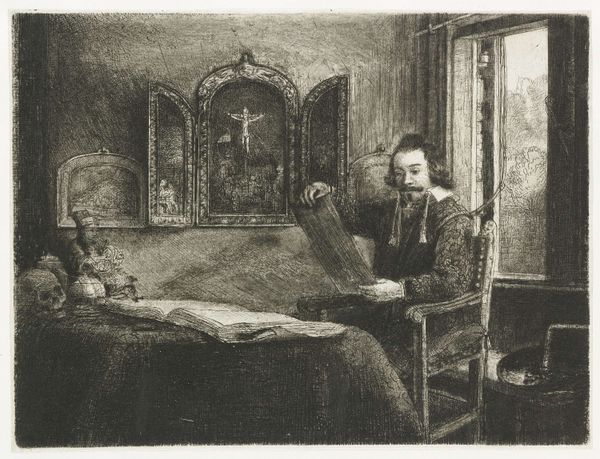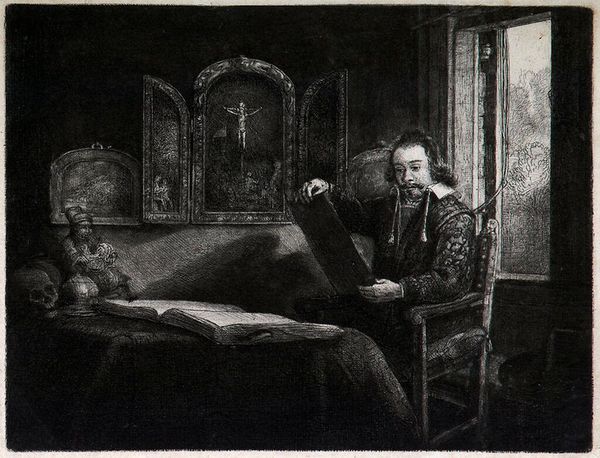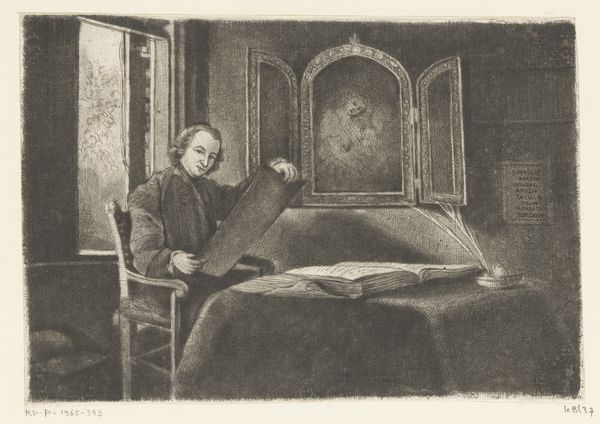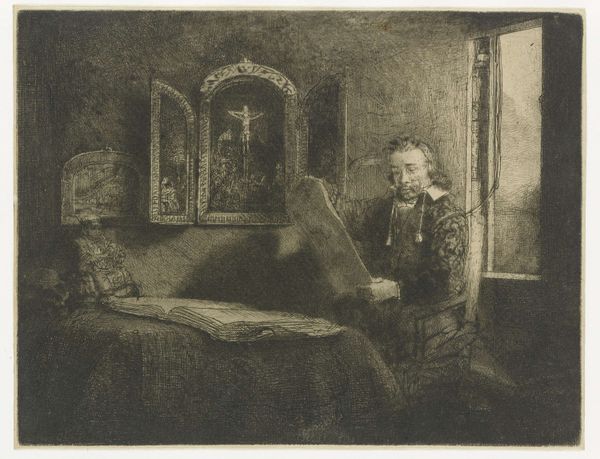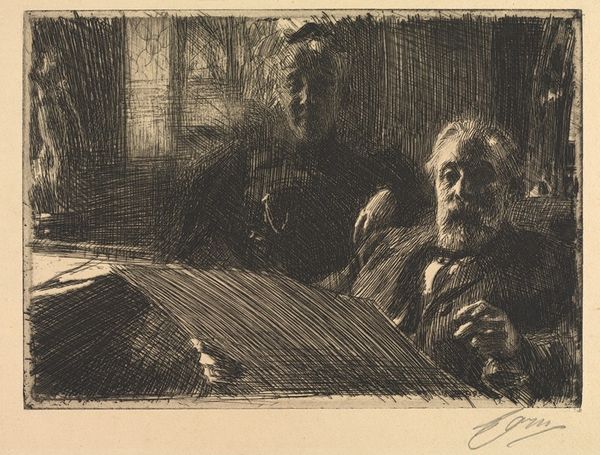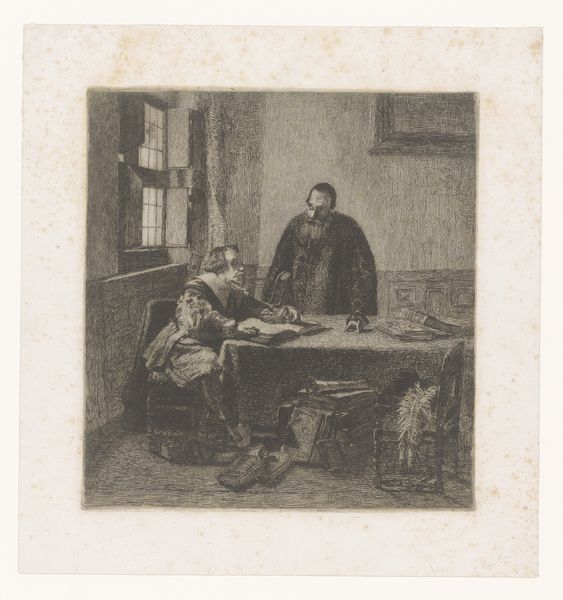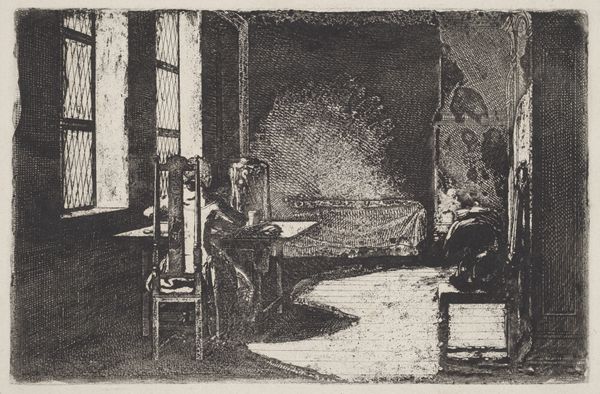
print, etching
#
portrait
#
baroque
#
dutch-golden-age
# print
#
etching
#
genre-painting
#
realism
Dimensions: height 160 mm, width 211 mm
Copyright: Rijks Museum: Open Domain
Editor: Here we have a print called "Abraham Francen, apothecary" from after 1657, made by an anonymous artist. It seems to be an etching. I am immediately drawn to the way it's composed with the subject in his domestic space surrounded by a large book and what appears to be an altarpiece. How do you interpret this work? Curator: This print offers a fascinating glimpse into 17th-century Dutch society, doesn't it? While seemingly a simple portrait, consider its cultural implications. Apothecaries like Francen weren't just dispensers of medicine; they were often community intellectuals, bridging science and society. That altarpiece you noticed, juxtaposed with the books, hints at the complex negotiations between religion and the burgeoning scientific rationalism of the time. Editor: That’s an interesting point about bridging science and society. Do you see the inclusion of religious iconography as a possible message? Curator: Precisely! The image prompts questions about identity and power, religion versus science, and art and patronage in a rapidly changing world. Think about the economic power being concentrated in the hands of the middle class during this time. Editor: So, seeing the print this way, it moves beyond a simple portrait into a statement of cultural identity in that moment? Curator: Precisely, it really illuminates the sociopolitical shifts of the Dutch Golden Age through one individual's portrayal. Editor: Thanks so much! I had not considered the place of apothecaries in that social and economic moment. Curator: My pleasure! Thinking about art within those complex social power dynamics really changes the way we see these artifacts, doesn't it?
Comments
No comments
Be the first to comment and join the conversation on the ultimate creative platform.
